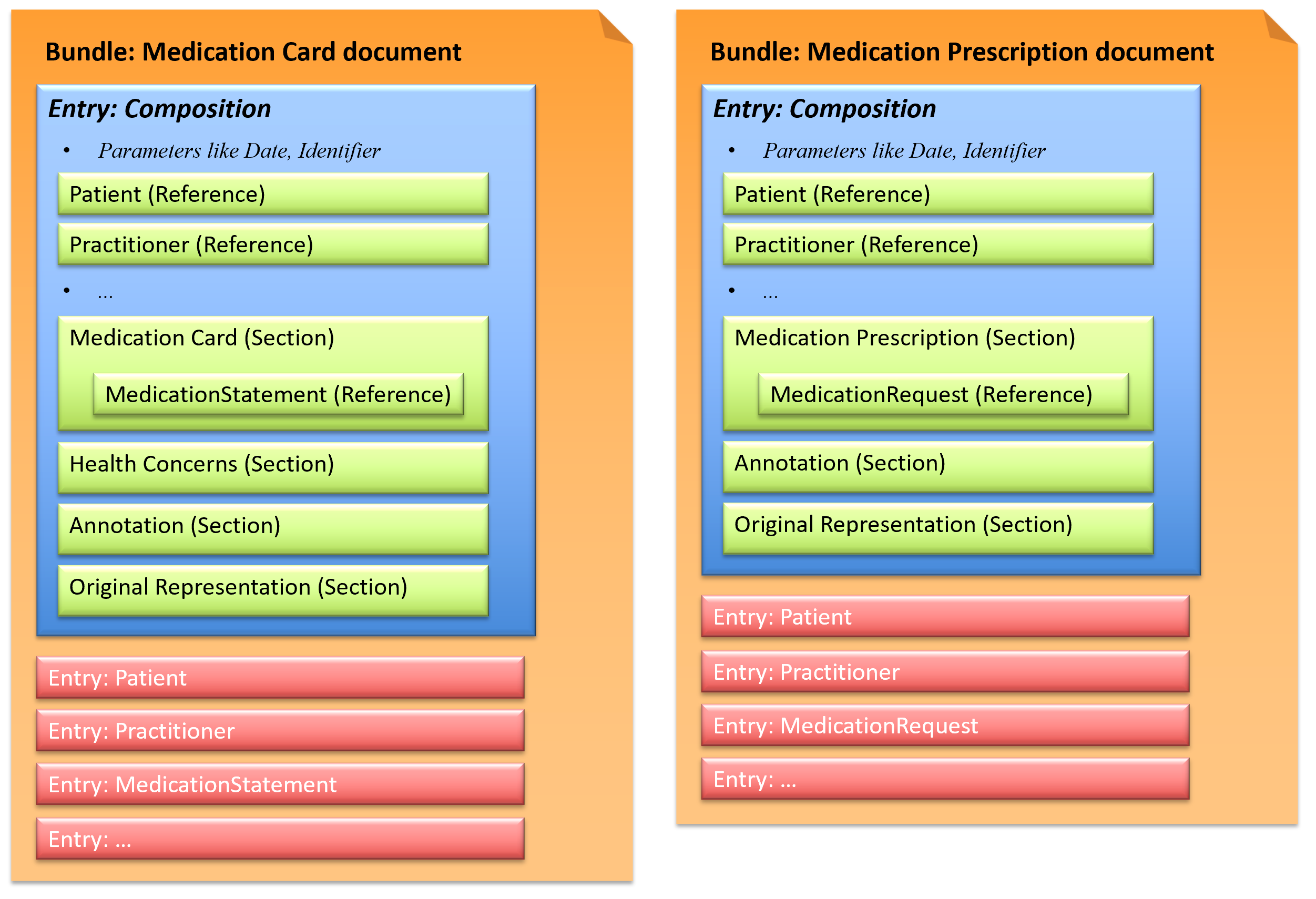CHMED Implementation Guide
3.0.0-ci-build - ci-build
CHMED Implementation Guide
3.0.0-ci-build - ci-build
CHMED Implementation Guide, published by IG eMediplan. This guide is not an authorized publication; it is the continuous build for version 3.0.0-ci-build built by the FHIR (HL7® FHIR® Standard) CI Build. This version is based on the current content of https://github.com/ahdis/chmed/ and changes regularly. See the Directory of published versions
Two CHMED exchange formats are defined:
These exchange formats are defined as a document type that corresponds to a Bundle as a FHIR resource. A Bundle has a list of entries. The first entry is the Composition, in which all contained entries are then referenced.

Fig. 3: Schematic illustration of the FHIR documents for the exchange formats
The Medication Card document provides as complete an overview as possible of all current medications for a patient at a given point in time (such as the end of a hospitalization or other encounter). The purpose of this document is to inform the patient and clinicians (therapists, etc.) of the current medication information.
The Bundle resource defines the Medication Card document and its content, which are contained as entries.
The Composition resource defines the healthcare-related information that is assembled together into a single Medication Card document. The Composition resource provides the basic structure of a FHIR document.
The medication card section contains the entries for the current medication of a patient. A medication consumed by a patient is recorded as MedicationStatement resource.
The health concerns section contains the patient’s medical data (Observation resources) and possible risks (Condition resources).
If the risk category is specified without any risk being specified in the list of risks, the entire risk category is considered as explicitly excluded for the current patient. If the category does not exist, the risks are considered as unknown for the patient.
The annotation section can be used to provide comments that cannot be declared in any of the other sections in the document. The comments are provided as narrative.
In this section, according to the Swiss exchange format, the original representation of the Medication Card document shall be embedded as a PDF in PDF/A-1 or PDF/A-2 format. The PDF is represented by a Binary resource (base64 encoded).
The Medication Prescription document describes the content and format of a prescription document generated during the process in which a health care professional decides that the patient needs medication (ONE or MORE).
The Bundle resource defines the Medication Prescription document and its content, which are contained as entries.
The Composition resource defines the healthcare-related information that is assembled together into a single Medication Prescription document. The Composition resource provides the basic structure of a FHIR document.
The medication prescription section contains the entries for the prescriped medications of a patient. An order or request of the medication to a patient is represented as MedicationRequest resource.
The same as in Medication Card document, see description in the annotation section above.
The same as in Medication Card document, see description in the original representation section above.